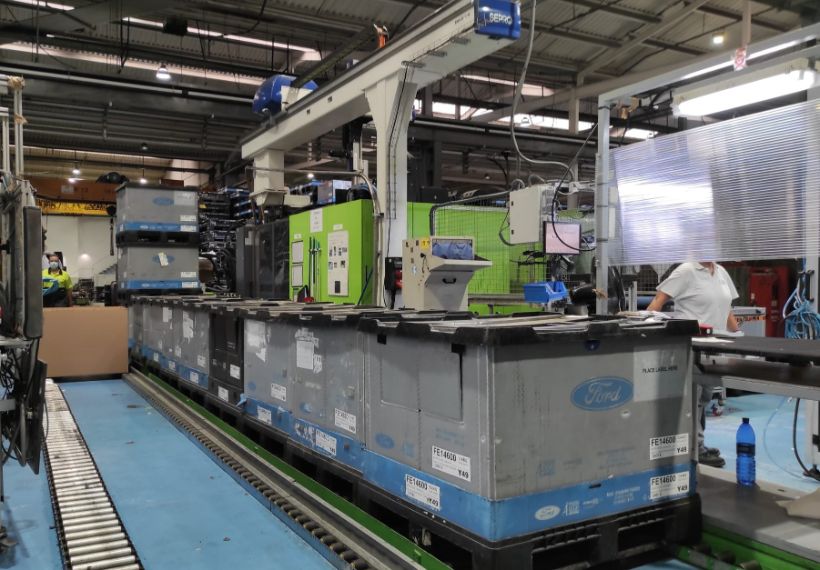Do you know the carbon footprint of your logistics decisions? Ask us
The need to decarbonize industrial production has led to cardboard boxes populating the landscape of logistics warehouses. And it makes sense when you're talking about single-use materials. But what if we reuse containers, could they be a more sustainable solution? After all, do we know exactly what carbon footprint we are generating in each case? At Industrias Alegre we have done the calculations. And the data speaks for itself. Do you want to know the results?

In our plant we have HybridBox containers with scratches, stains and even traces of old adhesive labels. No one would choose to photograph them. But for those of us who work here, they are a source of pride. Because they are still doing their job after a long time. They go to the customer's home protecting the parts without the need for cardboard or single-use foams. And they come back. Sometimes they wait outdoors without any problems. And again they go back out and back again... for years and years.
Yes, we have HybridBox containers at our plant that have been in operation since 2010! And they can still provide service for a long time.
That's extraordinary. But we only became aware of this reality when we embarked on a project to make this container even more sustainable.
Measuring before making new decisions
"We were starting from excellent data," confesses Lourdes Solares, from our R&D&I department where the project was tackled. "Our HybridBox was born following the logic of eco-design, so it is very easy to boast excellent data". Indeed, this equipment allows savings of up to 80% in return transport, it is made of up to 75% recycled material and its own logic manages to completely eliminate plastic or cardboard waste.
Nevertheless, the proposal consisted of investigating whether it was possible to make the product more sustainable, whether it was possible to unify materials, incorporate more recycled materials or reuse the textiles inside at the end of their useful life.
"But before making decisions, we needed to measure in order to be able to see our path clearly. We needed to know what the carbon footprint of our HybridBox containers is in order to lower it. That's why we built our carbon footprint calculator," says the specialist.
A carbon footprint calculator to know the real impact
The carbon footprint calculator is a tool for assessing the cleanest logistics solution, depending on the characteristics of each project, its estimated duration, the volume of materials being moved and the type of parts involved. And there have been a few surprises.
Single-use cardboard boxes or reusable plastic containers? There is no good answer a priori, because it would be dictated by prejudice. Only an exact calculation can give an answer... which sometimes turns out to be counterintuitive. This is what has happened to us when we started using the calculator: in many projects, the plastic container emerges as the cleanest solution.
Are you surprised?
A few days ago, the international giant Lego surprised the world by announcing that it will stop using rPET for its famous construction sets (you can read the news at this link). And not because it had given up caring for the planet, but precisely because it aspired to do better. In their research, they had calculated that the impact of recycled material meant more CO2 emissions over the product's lifetime.
Yes, that's what happens when you work with measurements and not just intuitive thinking.
How about studying your project together?
Hence our question: do you know how much your logistics tools pollute, have you considered whether you can improve your footprint, do you have reliable data or just intuition?
If you have a new industrial project in hand or want to improve the one that is already underway, count on our specialist team and its KAM Jesús Ibáñez (jesus-ibanez@ialegre.com). They will help you make decisions with this carbon footprint calculator.
Incidentally, this research project, the same one that encouraged the research team to create the calculator, concluded that some of the initial ideas were not so good in practice. But Solares comments that "far from being frustrated that we can't reuse old textiles for our own container, this task has allowed us to get closer to a material in which we are not specialists, textiles. And, thanks to the collaboration with Aitex, we have discovered new paths for innovation.